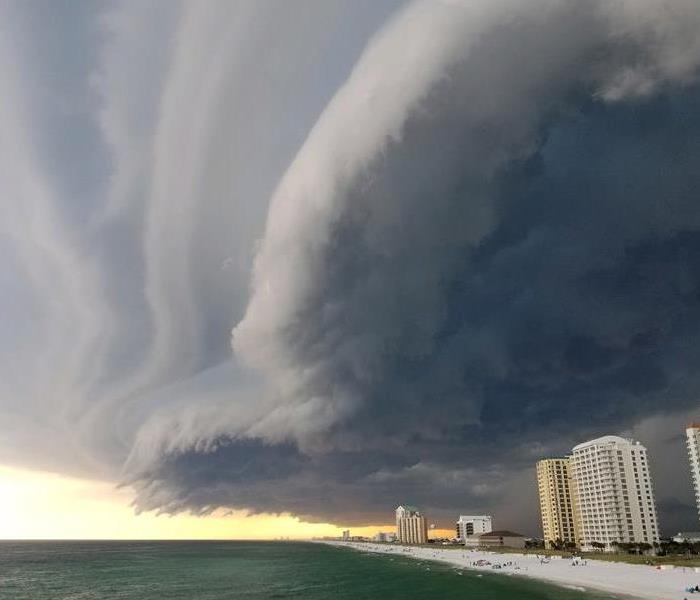Dealing with Water Damage After a Storm
9/28/2023 (Permalink)
 Water damage can be a challenge after a storm. Contact a professional to help mitigate water and storm damage.
Water damage can be a challenge after a storm. Contact a professional to help mitigate water and storm damage.
Water damage can be a widespread problem after any storm, and it can be particularly devastating for property owners in the South Central region. Storms in this region can bring heavy rainfall, flash floods, and other water-related catastrophes that can ruin your home or business. In this blog post, we will discuss the steps you can take to deal with water damage after a storm in the South Central region.
Ensure Safety First
Before you begin any water damage repair efforts, ensure that you and your family are safe. Be aware that water can carry dangerous chemicals and bacteria that can pose a health risk. Wear protective gear, such as gloves, masks, and boots. Also, be particularly cautious when using any electrical equipment near water, and do not use any electrical devices until you are sure that it's safe to do so.
Take photos or videos of the water damage to document the extent of the damage. This will help your insurance company assess your claim accurately. Take inventory of any damaged possessions, furniture, carpets, and other items, and make a list of them. Include any receipts or other proof of purchase for your items.
Remove Standing Water
Standing water is a breeding ground for mold and other harmful microorganisms that can worsen the damage. Your first step in dealing with water damage should be to remove as much standing water from your property as possible. You can use a pump, mop, or bucket to remove water, then use a dehumidifier or fans to assist with drying any remaining moisture.
After you've removed standing water, your next step should be to dry all wet materials thoroughly. This includes your walls, floors, carpets, and any other furniture or items that were affected. Use fans, dehumidifiers, and open windows to allow air to circulate and dry out damp environments.
Check for Mold
Mold can begin to form within as little as 24 hours after the flooding. Thus, it's important to check for mold growth thoroughly. Check confined areas, like attics, basements, and crawl spaces, as well as areas exposed to water, such as carpets, walls, and ceilings. If you have any concerns, call a professional mold removal company to evaluate it.
Water damage can weaken the structural integrity of your property over time. If you notice any structural damage, it's crucial to address the issue as soon as possible. Check walls, floors, roof, and the foundation for any cracks, warping, or other indications of structural defects. Professional contractors can help evaluate and repair any damage found.
Seek Professional Assistance
Dealing with water damage can be a daunting task. If you are overwhelmed, consider seeking assistance from a professional water damage restoration company. An expert team can help with assessing the damage, developing a repair plan, and carrying out a proper repair process. They have the expertise and specialized equipment required to repair damage quickly and effectively.
Water damage can be a significant challenge after the storm, but dealing with it properly is essential to restore your property to its pre-storm condition. It is imperative to take safety measures, document the damage, remove standing water, dry wet materials, check for mold, address structural damage, and seek professional assistance. The sooner you address water damage, the better. Quick action will minimize expensive repairs and health risks, preventing further deterioration of your property.

 24/7 Emergency Service
24/7 Emergency Service